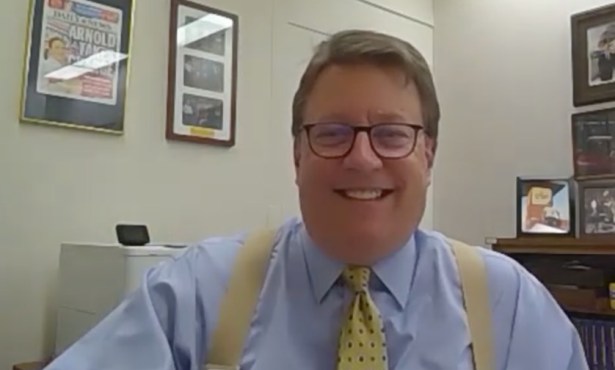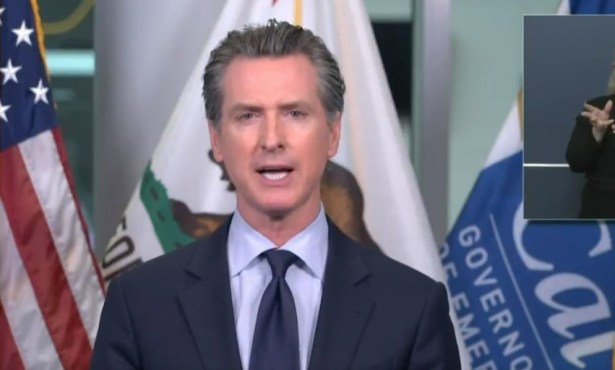Double Deadline
First Look at New Political Maps Could Shake Up Capitol's Partisan Brawl over Taxes
The late president Lyndon Johnson coined a felicitous phrase to describe high-stakes, closed-door, down-to-the-wire negotiations where political deals are made: “Getting down to the nut cuttin’.”
The catchphrase, which has absolutely nothing to do with the famous squirrels in Sacramento’s Capitol Park, comes to mind as Governor Jerry Brown and the Legislature confront two crucial, looming deadlines, one focused on policy, the other that’s pure politics all the way.
On June 10, the independent California Citizens Redistricting Commission is to release the long-awaited maps of new legislative and congressional districts it has crafted, after months of public hearings and data analysis, based upon the 2010 U.S. Census. Just five days later, state lawmakers face a newly toughened constitutional requirement to pass a budget, a task that’s been mired for months in ideological posturing and partisan sniping.

The intersection of the two deadlines will instantly shape a new, uncertain, and unpredictable political landscape in Sacramento, as the full impact of several major reforms approved by voters in recent years suddenly is felt within the space of a week:
Reapportionment: After decades of being protected by gerrymandering, incumbent legislators next week will get their first looks at the reconfigured political geography on which their futures will depend.
The independent redistricting commission, created when voters approved Proposition 11 in 2008, was set up to end the inherent conflict of interest of having legislators draw their own district lines. That historic practice often resulted in seats that were either very safe Democratic or very safe Republican; overall, the previous system favored partisans from the extreme wings of both parties over moderates, fueling gridlock in a Legislature populated more by ideologues than pragmatists.
The key goal of Proposition 11 sponsors was for the 14 members of the independent, ideologically balanced commission to effectively end gerrymandering. Along with certain legal requirements—courts have held districts must be geographically “compact” and “contiguous,” for example—the new lines also must account for demographic shifts of the past decade, most notably the sharp increase in Latinos, who now represent nearly 40 percent of the state’s population.
On June 10, the commission is scheduled to release its first draft maps, then hold another series of public hearings over the summer, with final district lines for the 2012 election to be completed in August. No one knows for sure what the draft districts will look like, but it is likely that a number of incumbents will find themselves with constituencies quite different than the ones they now represent.
Budget Deadline: With reapportionment as the backdrop, legislators and the governor will be under increased pressure to get a budget passed by June 15. Although this constitutional deadline has routinely been ignored in recent years, voters made two key changes to the process when they passed Proposition 25 last year.
For the first time, legislators will stop getting paid if the budget is not passed on time; also, for the first time in nearly 80 years, a simple majority vote in the Legislature, not two-thirds, is all that is needed to send a budget to the governor. There’s one huge caveat, however. While Democrats can approve a budget without Republican votes, they still need GOP support for any tax increase plans. With Brown insisting that some higher taxes are needed to erase a $10-billion deficit, the new revenue issue has blocked passage of a spending plan so far.
Now, with a few Republican lawmakers recently signaling that they may consider letting Brown put a tax measure on the ballot, some GOP members may also reexamine their blanket opposition to taxes after seeing their proposed new districts. Because a number of Republicans are likely to find more Democrat-leaning Latinos in their districts, for example, some may decide to exchange ideological purity for pragmatic deal-making. Or so Brown hopes.
What It Means to S.B.: Some key things to look for when the new maps come out: Will Representative Lois Capps’s 23rd Congressional District, often cited as a case study of gerrymandering, be reconfigured to make it more competitive? Will Das Williams’s 35th State Assembly district be redrawn to include all of Santa Barbara County, in accordance with substantial local public testimony before the redistricting commission several months ago? Will Republican State Senators Sam Blakeslee and Tony Strickland, who split the county between their far-flung 15th and 19th districts, face many more Democratic voters than they now represent in their gerrymandered seats?



